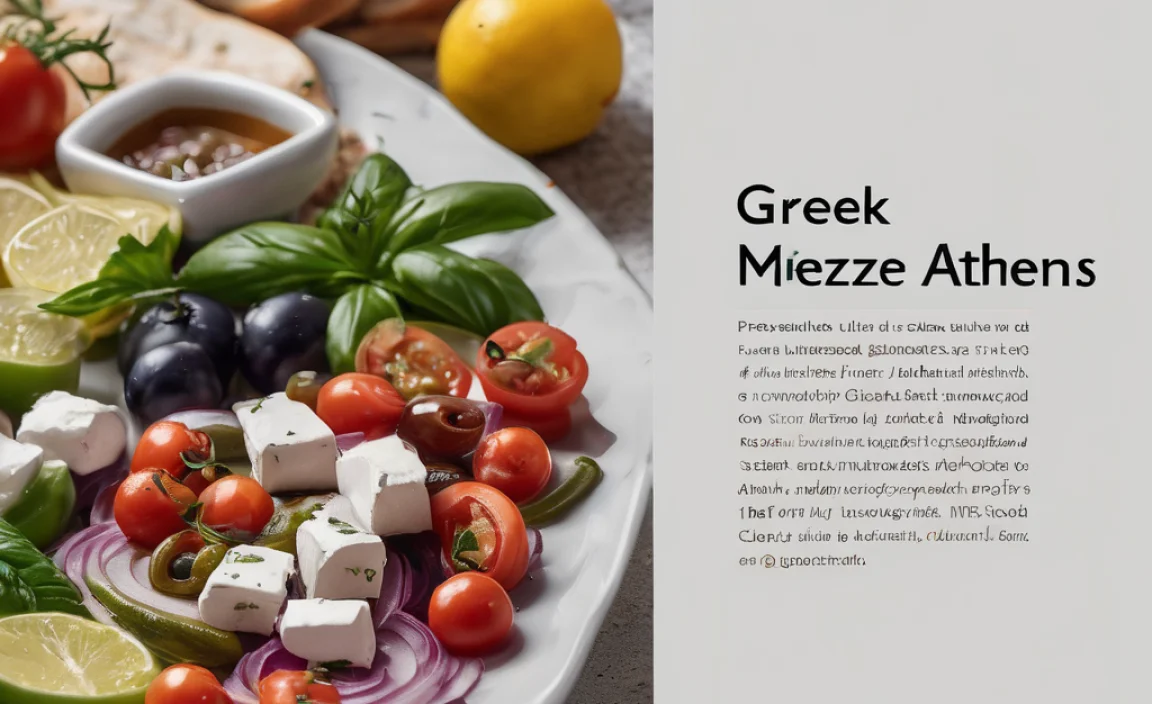Travel food insurance isn’t a thing you buy like trip cancellation coverage. Instead, it’s about smart planning to protect your food budget and health while traveling. This guide offers practical tips to avoid food-related stress and expense, ensuring your culinary adventures are delightful, not disastrous.
Hey there, fellow food adventurers! Joseph Bryant here from FoodsGuider. Ever started a trip with grand plans for delicious local eats, only to find yourself staring at overpriced tourist traps or dealing with an upset stomach that ruins your whole day? It’s a common travel hiccup, and it can really put a damper on your exploration. But don’t worry! Think of this guide as your secret weapon to navigate the world of travel food like a pro. We’ll cover easy ways to save money on meals, find authentic flavors, and most importantly, stay healthy and happy on your culinary journey. Get ready to travel with confidence and an empty stomach ready for amazing tastes – we’ve got this!
Understanding the “Travel Food Insurance” Concept
Let’s clear something up right away: you can’t exactly buy a policy called “travel food insurance.” Instead, this concept refers to the proactive steps and knowledge you gather to safeguard your food experiences and avoid common pitfalls. It’s about making informed decisions before and during your trip to ensure you eat well, stay healthy, and stick to your budget. When we talk about travel food insurance, we’re essentially discussing a strategic approach to enjoying local cuisine without facing unexpected costs or food-borne illnesses.
Why is Smart Food Planning Crucial for Travelers?
Traveling is exciting, and exploring new flavors is often a highlight. However, without a little forethought, your food budget can vanish faster than free samples at a culinary festival, and a simple case of traveler’s diarrhea can turn a dream vacation into a germ-filled nightmare. “Travel food insurance” is your shield against these woes. It’s about investing a small amount of time upfront to reap significant rewards in enjoyment, savings, and peace of mind during your entire trip. Let’s dive into how you can build this crucial aspect of your travel preparations.
Pre-Trip Preparation: Laying the Flavorful Foundation
Before you even pack your bags, a little research can go a long way in ensuring delicious and safe eating throughout your travels. Think of this as your culinary pre-game. It’s where you set yourself up for success, making sure you’re well-equipped to handle any food situation that comes your way.
1. Research Local Cuisine & Dining Etiquette
Understanding what to expect food-wise is your first line of defense. What are the local specialties? Are there common ingredients that might be unfamiliar or trigger allergies? Look up popular local dishes and understand how they are typically prepared. For example, knowing that ceviche in some regions is often served raw is crucial if you have concerns about food safety. Also, familiarize yourself with local dining customs. Knowing if tipping is customary, how to order, or if sharing dishes is common can prevent awkward moments and enhance your overall experience.
Where to Find Reliable Food Information:
- Travel Blogs & Foodie Websites: Many blogs focus on specific regions and offer detailed reviews of restaurants, street food vendors, and local markets. Look for sites with experienced writers who have spent time in the area.
- Guidebooks: Reputable guidebooks often have sections dedicated to local food, recommended eateries, and cultural dining tips. Check out resources like Lonely Planet or Fodor’s for well-researched information.
- Online Forums & Social Media: While take opinions with a grain of salt, platforms like Reddit (e.g., r/travel, r/food), TripAdvisor, and local Facebook groups can offer current insights and recommendations from recent travelers and residents.
- Government Health Advisories: For serious health concerns related to food and water, consult your country’s official travel advisories or health organizations. For example, the Centers for Disease Control and Prevention (CDC) provides excellent health recommendations for international travelers.
2. Identify Potential Food Safety Concerns
Different regions have different food safety standards. It’s wise to be aware of common issues. Is tap water safe to drink? Are there specific meats or seafood that are known to be higher risk in certain climates? Understanding these potential hazards allows you to make informed choices, like opting for bottled water, avoiding ice in drinks in some areas, or being cautious about street food if sanitation is a concern.
Common Food Safety Considerations:
- Water Quality: In many developing countries, tap water may not be safe to drink. Always opt for bottled, boiled, or purified water.
- Street Food Sanitation: While often delicious, street food can pose risks if not prepared hygienically. Look for vendors with high turnover, clean cooking surfaces, and food that is cooked fresh and hot in front of you.
- Raw or Undercooked Foods: Be cautious with raw fruits and vegetables unless you can peel them yourself, and be especially wary of undercooked meats, poultry, and seafood.
- Dairy Products: Unpasteurized dairy can be a source of illness. Stick to pasteurized products or packaged goods.
3. Budget for Food: Realistic Expectations are Key
Food can be a significant portion of your travel expenses. Before you go, research the average cost of meals in your destination. Will you be eating at local markets, mid-range restaurants, or fine dining establishments? Factor in snacks, drinks, and any specific dietary needs or preferences. Having a realistic daily food budget will prevent overspending and the stress of running out of money for meals.
Example Food Budgeting Table (Per Day, Per Person)
| Meal Category | Budget-Friendly (e.g., Local Market, Street Food) | Mid-Range (e.g., Casual Restaurants) | Higher-End (e.g., Nicer Restaurants) |
|---|---|---|---|
| Breakfast | $2 – $5 | $5 – $10 | $10 – $20 |
| Lunch | $3 – $7 | $8 – $15 | $15 – $30 |
| Dinner | $5 – $10 | $15 – $25 | $25 – $50+ |
| Snacks/Drinks | $2 – $5 | $5 – $10 | $5 – $15 |
| Daily Total Estimate | $12 – $27 | $33 – $60 | $55 – $115+ |
Note: These are estimates and can vary wildly depending on the destination. Always research local prices.
4. Pack Smart: Your Kitchen Toolkit on the Go
You don’t need a full kitchen, but a few smart items can help manage your food needs. Consider packing:
- Reusable Water Bottle: Essential for staying hydrated and reducing plastic waste. Many airports and hotels have refill stations.
- Water Purification Tablets or Filter: A great backup for ensuring safe drinking water if bottled options are unavailable or too expensive.
- Snack Containers: For carrying fruits, nuts, or other snacks purchased from local markets.
- Basic Utensils: A spork or compact cutlery set can be helpful for impromptu picnics or meals.
- Small First-Aid Kit: Including essentials for stomach upsets (antidiarrheal medication, rehydration salts, pain relievers).
On-the-Ground Strategies: Eating Well While Traveling
Once you’ve arrived, the real fun begins – tasting the local flavors! But remembering your pre-trip planning will help you navigate daily dining with confidence and smarts.
1. Embrace Local Markets and Street Food (Wisely!)
This is often where you’ll find the most authentic and affordable food. Markets are also a fantastic way to immerse yourself in the local culture. While street food can carry risks, choosing wisely can lead to incredible culinary discoveries.
Tips for Safe & Delicious Street Food:
- Look for Crowds: A busy stall with a long line of locals almost always means good food and high turnover.
- Observe Hygiene: Do the vendors handle money and food separately? Are their hands clean? Is the cooking area tidy?
- Cooked-to-Order: Opt for food that is cooked fresh and hot right in front of you. Avoid pre-prepared items that have been sitting out.
- Peelable Produce: If you’re choosing fruits or vegetables that aren’t cooked, stick to those you can peel yourself, like bananas or oranges.
- Trust Your Gut: If something doesn’t look or smell right, politely move on.
2. Seek Out Authentic Eateries, Not Tourist Traps
Restaurants in prime tourist locations often cater to visitors with higher prices and less authentic cuisine. Venture a few blocks away from major attractions to find places frequented by locals. These spots usually offer better value, more genuine flavors, and a more immersive cultural experience. Ask your hotel concierge (if they seem knowledgeable beyond tourist recommendations), look for busy local spots, or use apps that highlight local favorites.
3. Be Cautious with Buffets and Pre-Cooked Items
Buffets, while convenient, can sometimes be a breeding ground for bacteria, especially in hot climates where food may sit at lukewarm temperatures for extended periods. If you opt for a buffet, choose places where food is replenished frequently and kept at appropriate hot or cold temperatures. Similarly, be mindful of dishes that have been sitting out for a long time.
4. Stay Hydrated Safely
Dehydration can sneak up on you, especially in warm climates, and can lead to fatigue and headaches, impacting your ability to enjoy your trip. Always carry your reusable water bottle. If you’re unsure about tap water, use your purification tablets or filter. Even in places where tap water is generally safe, it’s wise to err on the side of caution and stick to bottled or purified water if you have a sensitive stomach. Remember to also be cautious with ice cubes in drinks if water safety is a concern.
5. Communicate Your Dietary Needs Clearly
If you have allergies, intolerances, or follow a specific diet (vegetarian, vegan, etc.), learning a few key phrases in the local language can be incredibly helpful. Have your dietary requirements written down, perhaps in a small card or on your phone, translated into the local language. This can be invaluable when ordering food in restaurants or communicating with vendors.
Useful Phrases to Learn (Example):
- “I am allergic to [ingredient].”
- “I cannot eat [food item].”
- “Is there [ingredient] in this dish?”
- “I am vegetarian/vegan.”
- “No meat/fish/dairy/nuts.”
6. Pack Snacks for Emergencies
Having a few non-perishable snacks in your bag – like granola bars, nuts, or dried fruit – can be a lifesaver. They are perfect for bridging the gap between meals, keeping energy levels up during busy sightseeing days, or providing a familiar option if you’re struggling to find suitable food or are feeling unwell.
When Things Go Wrong: Handling Food-Related Issues
Despite the best preparations, sometimes things don’t go as planned. Having a plan for when you experience food poisoning or other issues can significantly reduce the stress and impact on your holiday.
1. Recognize the Symptoms of Foodborne Illness
Symptoms can include nausea, vomiting, diarrhea, abdominal cramps, fever, and headache. These typically appear anywhere from a few hours to a few days after consuming contaminated food or water. Knowing what to look for helps you address the problem promptly.
2. Rehydrate and Rest
The most crucial step in recovering from foodborne illness is staying hydrated. Drink plenty of safe fluids like bottled water, oral rehydration solutions (ORS), or clear broths. Avoid sugary drinks, caffeine, and alcohol, which can worsen dehydration. Get as much rest as possible.
3. Seek Medical Attention When Necessary
If your symptoms are severe (e.g., high fever, bloody diarrhea, signs of severe dehydration like dizziness or little urination), or if they persist for more than a couple of days, it’s important to seek medical advice. Look for internationally accredited clinics or hospitals, or ask your hotel for recommendations. Your travel insurance (the general kind, for medical emergencies) might cover these costs.
4. Be Aware of Traveler’s Diarrhea Prevention
While not always preventable, practicing good food and water safety, as mentioned above, significantly reduces your risk. Some travelers consider over-the-counter medications like bismuth subsalicylate (e.g., Pepto-Bismol) for mild prevention, but always consult a healthcare professional before your trip, especially if you have pre-existing conditions.
5. Know Your Travel Insurance (for Medical Emergencies)
While “travel food insurance” isn’t a policy, your standard travel insurance for medical emergencies is vital. If you fall seriously ill due to something you ate or drank, your medical travel insurance can cover doctor’s visits, hospital stays, and medication. Familiarize yourself with your policy details before you leave.
FAQ: Your Quick Guide to Travel Food Security
Here are some common questions people have about managing food while traveling:
Q1: Is there really “travel food insurance” I can buy?
A1: No, there isn’t a specific insurance policy called “travel food insurance.” It’s a concept that refers to the proactive planning and smart choices you make to ensure safe, healthy, and budget-friendly food experiences during your trips.
Q2: How can I find authentic, local food that isn’t a tourist trap?
A2: Venture a few blocks away from major tourist attractions. Look for bustling eateries filled with locals, check reputable travel blogs, or ask locals for recommendations. Local markets are also excellent for authentic flavors and prices.
Q3: What are the biggest food safety risks when traveling?
A3: Common risks include consuming contaminated water, unpasteurized dairy, undercooked meats, and food prepared with poor hygiene, especially from street vendors or buffets in areas with lower sanitation standards.
Q4: How can I save money on food while traveling?
A4: Eat at local markets and street food stalls, pack snacks, utilize hotel kitchenettes if available, take advantage of early bird specials or lunch menus, and limit expensive drinks or multi-course meals at high-end restaurants.
Q5: What should I do if I get sick from food or water?
A5: Focus on rehydration with safe fluids like bottled water or ORS. Rest is crucial. If symptoms are severe or prolonged, seek medical attention. Your standard travel medical insurance will likely cover these emergencies.
Q6: Is it safe to drink tap water in all countries?
A6: No, it is not safe to drink tap water in many countries. Always check local advisories and opt for bottled water, boiled water, or water purified with tablets or a filter if you are unsure.
Q7: What’s the best way to handle food allergies abroad?
A7: Research common allergens in your destination. Learn key phrases in the local language to communicate your allergy and have it written down on a translated card. When in doubt, choose simpler dishes or restaurants that can accommodate your needs.
Conclusion: Your Passport to Delicious and Safe Travels
So there you have it – your comprehensive guide to navigating the world of travel food with confidence and flair! Think of these tips as your essential “travel food insurance” policy, built on preparation, awareness, and smart choices. By taking a little time to research local cuisine, understand potential safety concerns, budget realistically, and employ smart eating strategies on the go, you can transform your culinary experiences from potential pitfalls into the most memorable highlights of your journey. Remember, enjoying local food is a huge part of embracing a new culture. With a little planning, you can savor every bite, stay healthy, and keep your wallet happy, making your travels truly delicious and worry-free. Happy and healthy eating, wherever your adventures take you!







